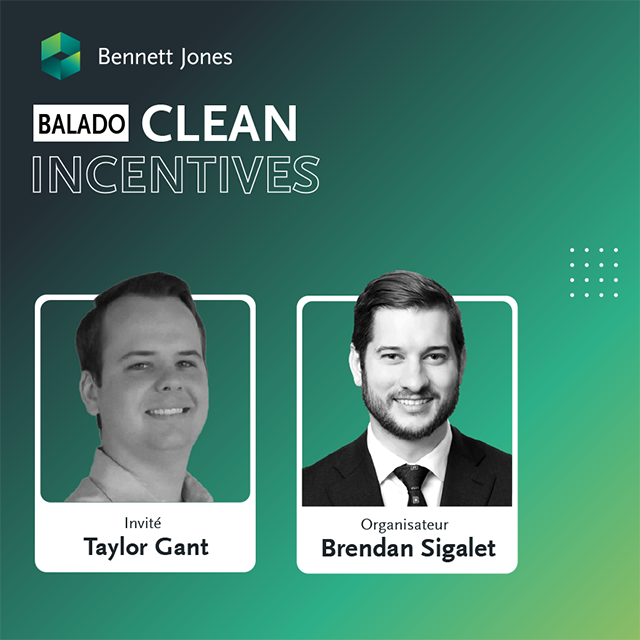Les nouveaux projets d'infrastructure constitueront une partie importante de la reprise du Canada après la crise de la COVID-19, et bon nombre d'entre eux seront situés sur la voie de la réconciliation avec les peuples autochtones. Écoutez ce que l'évolution des environnements juridiques, politiques et commerciaux signifie pour la mobilisation des communautés autochtones sur l'investissement dans des projets d'infrastructure au Canada. Serge Dupont anime cette discussion avec Will Osler et Sharon Singh, tous de Bennett Jones LLP.
D’autres balados Podcasts
Voir tous les épisodesBalado Clean Incentives : Ce que le Canada peut apprendre du guide américain sur la conformité des salaires et les technologies propres
Dans cet épisode de l’initiative Incitatifs pour l’énergie propre, nous nous penchons sur l’évolution des besoins en main-d’œuvre liés aux crédits...
1 janvier 1Balado Clean Incentives : Technologies propres LE CCI décodé : Avantages et stratégies pour les entreprises canadiennes
Dans l'épisode inaugural de Clean Incentives, les animateurs Brendan Sigalet et Derrick Osborne, aux côtés d'invités spéciaux Ashley White et Jason Roth, se penchent sur la myriade d'incitatifs fiscaux...
25 juillet 2024Balado Clean Incentives : Maximiser les investissements dans les technologies propres : Aperçu des crédits d'impôt du CUSC pour les entreprises canadiennes
Dans cet épisode, les animateurs Brendan Sigalet et Derrick Osborne sont rejoints par d'autres avocats de Bennett Jones Shawn Munro, Luke Morrison et Sharon Singh, car ils offrent des informations précieuses...
12 septembre 2024Balado Clean Incentives : Le crédit d'impôt canadien pour l'hydrogène propre : possibilités et défis pour l'élaboration et le financement de projets
Dans cet épisode de Clean Incentives, l’animateur Brendan Sigalet dévoile les possibilités et les défis du crédit d’impôt pour l’hydrogène propre du Canada avec les partenaires de Bennett Jones, Geoff...
24 octobre 2024Balado Clean Incentives : Les crédits d'impôt pour l'énergie propre au Canada dans un paysage politique en évolution
Dans cet épisode de Clean Incentives, vous découvrirez l’évolution des crédits d’impôt pour les énergies propres au Canada et les dynamiques politiques qui façonnent leur avenir. L’animateur Brendan Sigalet est...
30 janvier 2025Balado Clean Incentives : Saisir le potentiel du crédit d'impôt à l'investissement dans la fabrication de technologies propres
Le crédit d’impôt à l’investissement dans la fabrication de technologies propres (CII) du Canada est-il suffisant pour accélérer la fabrication de technologies propres? Dans cet épisode de Clean Incentives,...
25 mars 2025



